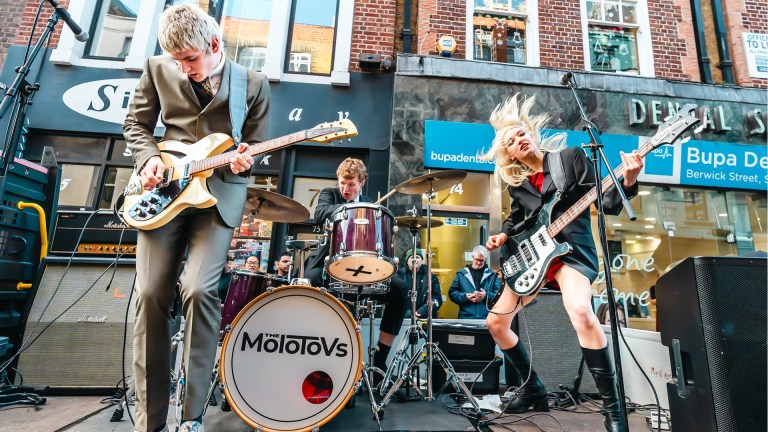In a chapter of Rory MacLean’s book Berlin, dedicated to David Bowie’s much mythologised spell spent living in Germany’s then divided capital circa 1976-78, the author evocatively imagines one of the biggest rock stars in the world, anonymously rattling around the cobbled, battle-scarred streets of the city on an old Raleigh bicycle. On his cheerful pedal, he re-traces the footsteps of his creative idols, whether passing Brecht’s blitzed apartment in Wilmersdorf or Kirchner’s old studio in Steglitz.
The Starman subsequently inserted himself into the city’s artistic geography such that people today now walk Berlin’s streets retracing his footsteps. Like countless others, I’ve stood in front of the plain building at Hauptstraße 155 where Bowie once shared a flat with Iggy Pop, picturing the two of them stumbling in stoned and drunk. Similarly, I’ve hung about outside the legendary Hansa Studios, imagining the embryonic muffled strains of the Heroes album echoing faintly from within.
Get the latest news and insight into how the Big Issue magazine is made by signing up for the Inside Big Issue newsletter
Bowie’s as much a part of Berlin today as Brecht, Kirchner, Dietrich or Isherwood. And yet, relatively little is known, or at least properly understood, about his transformative time there. It was his great escape, from Los Angeles, from fame, from crippling cocaine addiction and paranoid psychosis. In a place of Cold War fear, beer, queers and sexual and artistic liberation at the ragged edge of the Western world, Bowie disappeared for a while. There’s no footage of him in Berlin, and few photographs. Outsized legends have grown up to fill the information void. Some of them, it transpires, are less powerful than events as they actually happened.
In Bowie In Berlin, a new BBC radio documentary, writer-presenter and filmmaker Francis Whately and producer John Wilson go further than ever in sifting Berlin Bowie fact from fiction and shining a torch into the murky inner life of his most mysterious era. The big truths hold firm. Berlin really did save Bowie, they concur, and helped an artist who had hitherto hidden behind characters – Ziggy Stardust, Aladdin Sane, the Thin White Duke – pull off his greatest reinvention. As himself.
“I think in Berlin, he wanted to get back to the real David Bowie, and I think that’s what he did,” says Whately, who knew the musician in the latter years of his life through his work on various TV documentaries including the acclaimed David Bowie: Five Years (2013) and David Bowie: The Last Five Years (2017).









